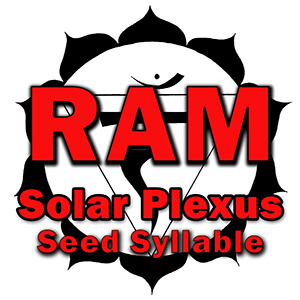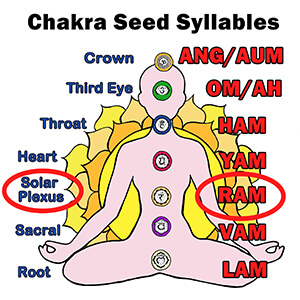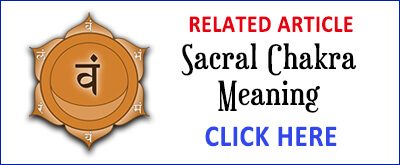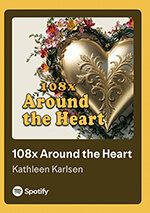Watch nearly 400 videos on the Vocal Medicine Channel!
Solar Plexus Chakra Mantra
A solar plexus chakra mantra is one of the most direct ways to work with the vital energy in the third chakra. This is important for the psychological and spiritual aspects of the solar plexus chakra as well as the health of the physical organs associated with the solar plexus.
Solar Plexus Chakra Seed Syllable
A simple solar plexus chakra mantra involves using the bija or beej seed syllable for this chakra. The bija seed syllables are fundamental sounds that connect to each of the seven chakras. The seed syllable for a solar plexus chakra mantra is RAM (pronounced “ruhm”).
Share this page with a friend!
Powerful Solar Plexus Chakra Mantra
A simple and effective formula for chakra mantras is the sound OM followed by the chakra seed syllable, then the word “Namaha” and finally a repetition of the seed syllable. Thus, a simple mantra for the solar plexus chakra would be “OM RAM Namaha RAM.”
Meaning of OM in the Solar Plexus Chakra Mantra
Typically, mantras begin with the sound OM. The Sanskrit word OM is familiar to most people. OM is the sound of the universe, the sound from which all other sounds are formed. OM serves to focus the mind at the beginning of a mantra.
Action of the Word OM
OM is said to draw the energy from the bottom of the spine to the top of the head. The energy of OM is one of expansion and ascension. In terms of healing, OM brings prana into the subconscious mind. OM is the sound of the sun and sheds light on addictive tendencies and negative emotions, bringing them to light for healing and transmutation.
Symbolic Meaning of OM
OM represents past, present and future. OM is a seed or building block of creation. OM is the mantra of assent, much like saying “amen” at the end of a prayer. In addition, when used at the beginning of a mantra, OM affirms the intention of the mantra.
Decoding the Seed Syllable RAM
After chanting the word OM, the solar plexus chakra mantra contains the seed syllable or bija for this chakra. The seed syllables originated in Tantric Hinduism or Esoteric Buddhism. Seed syllables are ancient, mystic sounds that capture the essence of a particular principle, often personified as a deity or buddha. The seed syllables do not have a specific translation, but are believed to contain great spiritual power.
The Energy of the “R” Consonant
The word RAM can be broken down into three letters or three sounds. The “R” sound is related to fire energy. This is the energy of heat and digestion. The symbol of the seed syllable RAM is a red triangle pointed upwards. The related sense organ is the eyes. The related motor organ is the feet. Additional organs of the body related to this chakra are the blood, liver, small intestines, and the digestive system as a whole.
Central Vowel: Short “A”
The “a” in the word RAM is a short vowel pronounced “uh.” This vowel sound is directly connected to the root chakra. It is the most basic sound created when air passes over the vocal chords. This is a grounding sound that is present in the seed syllables for the first five chakras: LAM (root chakra), VAM (sacral chakra), RAM (solar plexus chakra), YAM (heart chakra) and HAM (throat chakra).
Meaning of the Consonant “M”
The “M” at the end of the word RAM is the transformative energy of the universe and exists in the realm of thoughts and feelings. The sound “M” is a nearly universal sound associated with the feminine and the concept of motherhood ion languages around the world: mater, mama, mommy, matre, ma’am, moeder, ma, meme, majko, matka, mor, mere, maman, mutter, etc.
Putting It Altogether: RAM
When “RAM” is taken as a whole, the syllable is related to the fire element. In the Ayurvedic system, the energy of RAM is pitta. Pitta is one of the three fundamental patterns created by a unique combination of the five natural elements (fire, air, water, earth, ether). Pitta governs metabolism, temperature regulation and physical transformation.
Meaning of “Namaha”
Finally, the root chakra mantra closes with the word “Namaha.” This word is usually translated as “I bow,” “I give reverence” or “I honor.” In addition, the root “namah” is also present in the word “namaste,” which is used to end many yoga classes and indicates reverence for the Light that resides in each person. The word “Namaha” also encapsulates the syllable “ma,” bringing in the energy of the Divine Mother into the root chakra mantra.
Solar Plexus Chakra Mantra Meaning
This mantra can be translated as, “I give honor to the energy of the solar plexus chakra.” This is a simple but powerful mantra that should be approached with caution. The chakra seed syllables are very powerful. This is the reason that some experts suggest starting with five minutes or less a day when practicing chants that use the chakra seed syllables.
Other Approaches
Other approaches to using a solar plexus chakra mantra would include singing or speaking affirmations for the solar plexus chakra, singing chants to the deities associated with the solar plexus chakra, or the practice of sacred toning with vowels sounds. We’ll look at these solar plexus chakra mantra options below.
More Resources
Learn more about the solar plexus chakra in the article Solar Plexus Chakra Symbol Meaning. Or explore many facets of chakra mantras in Chakra Sounds & Seed Syllables.
Mantras to Solar Plexus Chakra Deities
Another option for a solar plexus chakra mantra is to focus on the associated Hindu deities. Perhaps the most significant aspect of relating to a chakra god or goddess is the sense of a personal relationship. Giving devotion to a specific form of the deity can reinforce their positive characteristics within ourselves.
Solar Plexus Chakra Gods and Goddesses
The solar plexus chakra is associated with a number of gods and goddesses including the god Rudra, his consort Lakini, and the goddess Lakshmi. There are others, but these are three of the main solar plexus chakra deities.
Solar Plexus Chakra Mantra to Rudra
Rudra is a form of Shiva, usually depicted with a scarlet hue and three eyes. In this personification, Rudra is shown as an old man with a powerful bull as his vehicle. This is a form of Shiva that annihilates desire and wrong action. A mantra referencing both Rudra and Hanuman is the following: “OM HUM Hanumate Rudratmakaya Hoom Phat.” Learn more about this mantra in the article Hanuman Yantra Meaning.
Sacral Chakra Mantra to the Goddess Lakini
Lakini is a benefactor goddess and the consort of Rudra. She is associated with the solar plexus, seat of the sun. This chakra encompasses the power of the emotions, intuition, and gut feelings. Lakini is depicted clothed in yellow like the sun. She drinks the nectar of the crown chakra. A simple mantra to lakini would be “OM Lakini Namaha OM.”
Sacral Chakra Mantra to the Goddess Lakshmi
Lakshmi is the goddess of wealth, fortune and prosperity. Her name is derived from a Sanskrit word meaning goal, aim or sign. In addition, Lakshmi is usually shown seated or standing on a lotus. The lotus symbolizes creation, beauty, harmony, diversity, stability, and support. Learn about this goddess and her mantras in the article Lakshmi Mantra to the Goddess of Wealth.
RESOURCE: Chakra Gods & Goddesses
Musical Note Names as Mantras
Solemnization is the practice of using syllables to teach pitch and sight reading. This practice aids in the recognition of the different steps of the scale. This approach originated in ancient India with a system known as sargam. Sargam is composed of seven tones called svaras or swaras.
System of Sargam
In the Indian system, the notes of the scale are paired with the following syllables: SA, RE, GA, MA, PA, DHA, NI, SA. Thus, the chakras and musical notes in this system would be: SA (root), RE (sacral), GA (solar plexus), MA (heart), PA (throat chakra), DHA (third eye chakra) and NI (crown chakra).
Attributes of the Sound GA
The sound “GA” for the solar plexus chakra is said to arise from the bleating of a goat. This sound is also associated with the sun. The note GA is the third note of the scale and can be used to create a solar plexus chakra mantra. Singing this sound in different rhythms and at different speeds is a very simple solar plexus chakra mantra.
Meaning of the Solar Plexus Chakra Sound
The full note name for the solar plexus chakra is “gandhara.” The name refers to a type of rice or an ancient region is northwest Pakistan and eastern Afghanistan. This is the third note in the classical Indian scale.
RESOURCE: For more information, read Chakras and Musical Notes.
Click for Handout Featuring Mantras for Digestion
Mantras for the Solar Plexus Chakra Organs
The solar plexus chakra governs the power of transformation and assimilation. The solar plexus chakra is the center of digestion of food on the physical level as well as the digestion of thoughts and emotions on the mental and emotional levels. The solar plexus is the fire center, often symbolized by the colors yellow or red and a sun-like image.
Solar Plexus Chakra Mantras for the Body
The solar plexus is the center of gut-level intuition. In the physical realm, the solar plexus is associated with the following organs:
- pancreas
- liver
- stomach
- adrenals
The following is solar plexus chakra mantra for associated organs and systems:
NAVEL: Om Bham Namah Nabhau
Solar Plexus Chakra Mantra Sounds
Bija Seed Syllable: RAM
Eastern Scale (Sargam): GA
Musical Instrument: Organ
Sound Frequency: 528HZ
Hindu Deities: Rudra, Lakshmi, Lakini
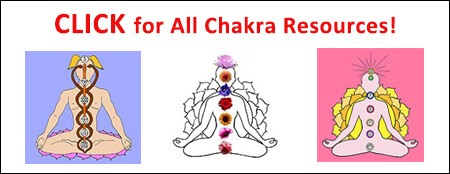
SUMMARY: SOLAR PLEXUS CHAKRA MANTRA ARTICLE
This article on finding a solar plexus chakra mantra includes a simple Vedic mantras using the Sanskrit seed syllable RAM. A video demonstrating the mantra “OM RAM Namaha RAM” is provided. Other topics include detailed explanations of the sounds of the solar plexus chakra as well as solar plexus chakra mantras to the Hindu deities associated with the third chakra.
Click for all content on our Site Map
Author Kathleen Karlsen
Kathleen Karlsen is a musician, artist, writer and speaker. She is the author of two books (Flower Symbols and Vocal Medicine) and over 200 articles. Kathleen, her husband Andrew, and their five children live in Bozeman, Montana. More about Kathleen Karlsen.
Watch nearly 400 videos on the Vocal Medicine Channel!
Share this page with a friend!
![]() Vocal Medicine Music on Spotify!
Vocal Medicine Music on Spotify!

